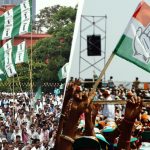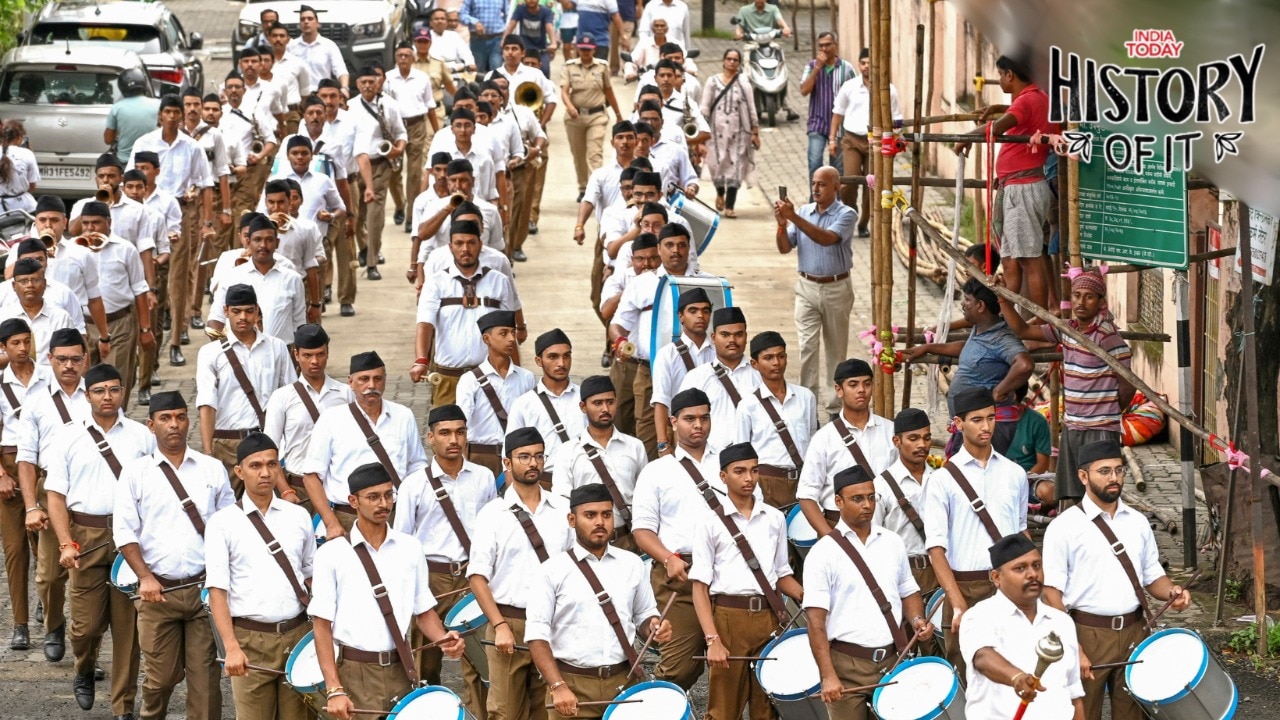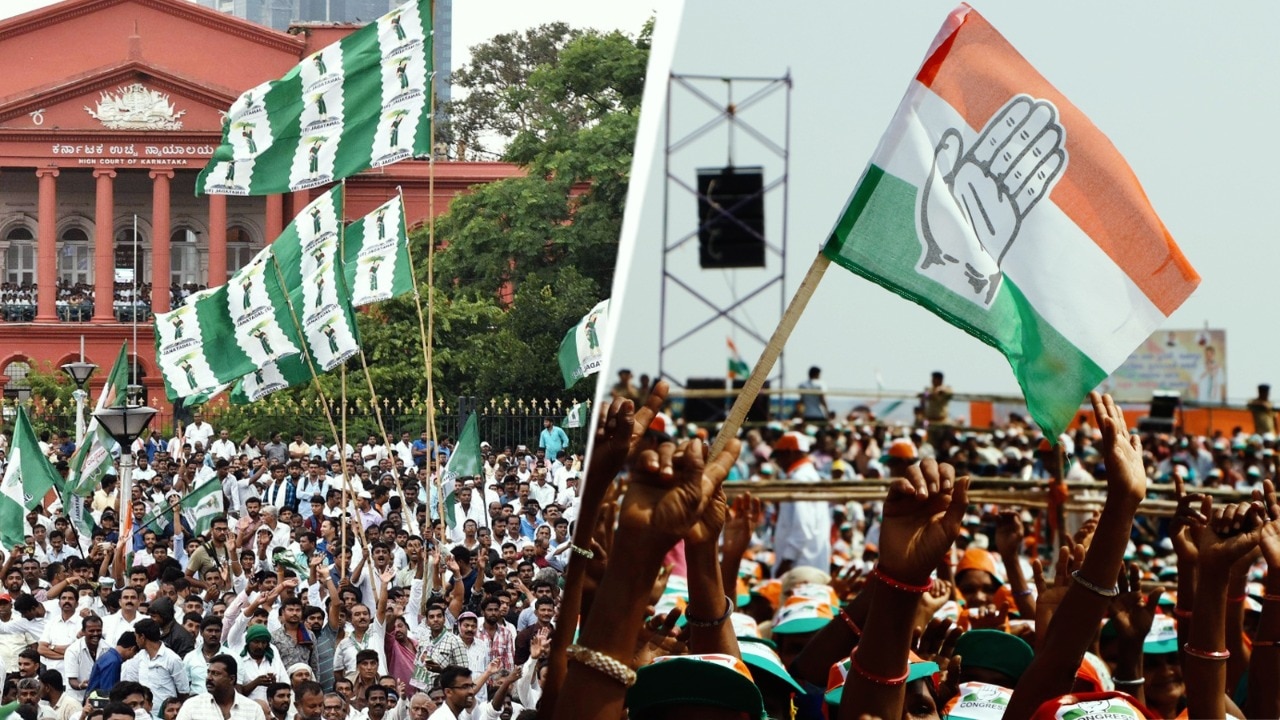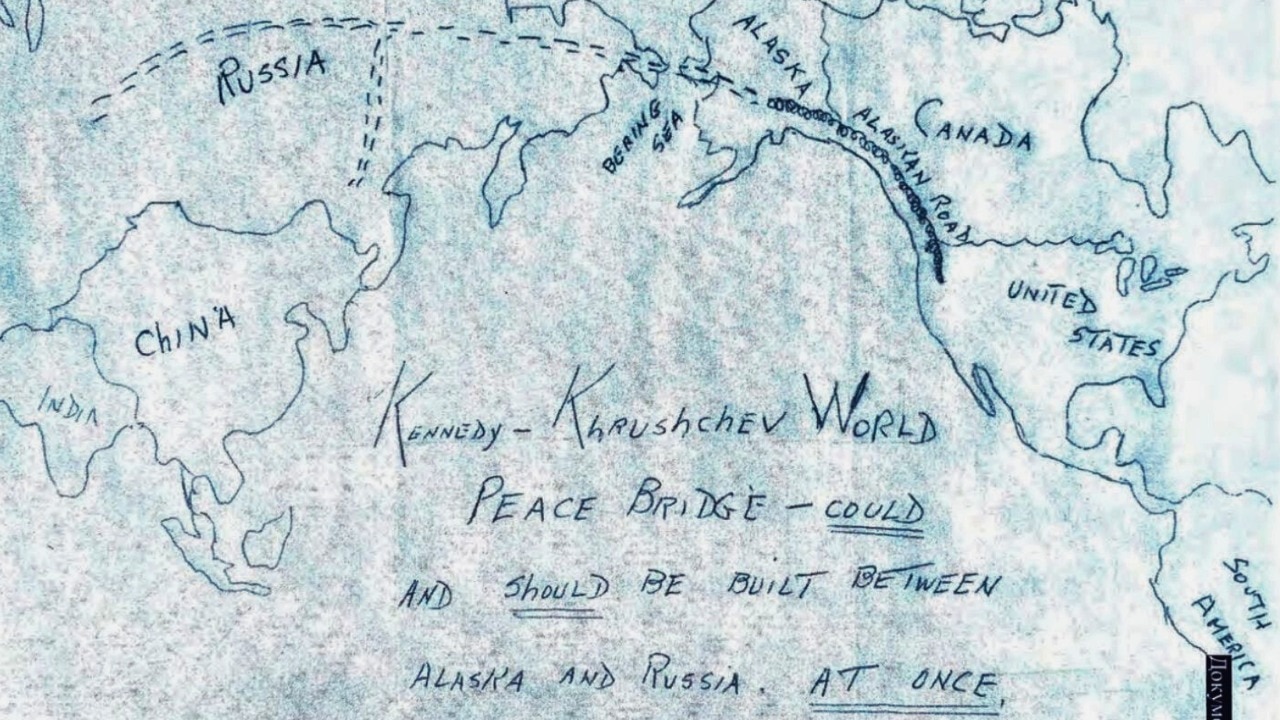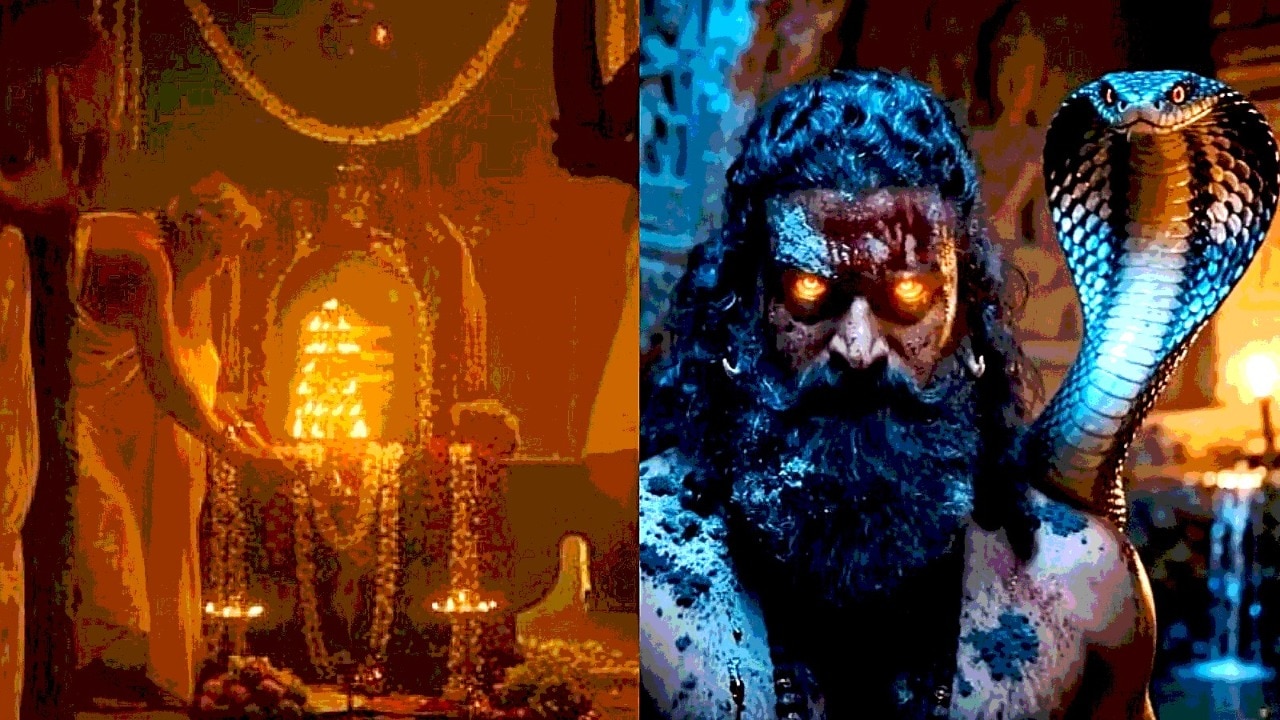“Indira Gandhi ultimately did secure a permanent place at the doorstep of history as a great martyr. With her dynamism born out of her fearlessness and dexterity, she was able to take the country forward like a colossus for over a decade. She alone could run the decadent political system of our corrupt and divided society,” wrote RSS ideologue Nanaji Deshmukh in 1984 after the assassination of the prime minister. Deshmukh’s article in Hindi magazine Pratipaksh, titled Moments of Soul Searching, concluded with a call to bless and support Rajiv Gandhi ahead of the Lok Sabha elections.
An RSS ideologue heaping praise on a Congress leader and seeking blessings on the party, which followed the party winning a record 414 Lok Sabha seats with over 49% vote share (the highest for any party) might seem surprising, even shocking, in 2025. Come to think of it, the BJP, founded in 1980, already had some pan-India presence by then. At least six secret meetings took place between Rajiv Gandhi and RSS leadership, including one at the New Delhi residence of liquor baron Kapil Mohan. These discussions led to the RSS extending its support to the Congress in the 1984 Lok Sabha polls.
In the present-day context, the Congress seeking the support of the RSS might seem unbelievable also because of the constant attack on the Sangh by Rahul Gandhi, the son of Rajiv Gandhi. It is also ironic because Priyank Kharge, Karnataka Minister and son of Congress chief Mallikarjun Kharge, wrote to Chief Minister Siddaramaiah, seeking a ban on RSS activities on government premises. He alleged that the RSS was spreading divisive ideas among children and the youth by conducting shakhas and gatherings in government schools, playgrounds, and temples.
Siddaramaiah replied saying he had instructed the Chief Secretary of Karnataka to examine the measures taken by the neighbouring Tamil Nadu government to restrict the activities of the RSS.
Days later, Kharge, in another letter to Siddaramaiah, demanded strict action against government employees taking part in programmes organised by the RSS and similar organisations.
Following Kharge’s request, the Karnataka Cabinet has decided to issue an order preventing trespassing on public properties by organisations such as the RSS, the state’s Law and Parliamentary Affairs Minister HK Patil said on Thursday.
From seeking the RSS’ support for polls to now seeking a ban on the same, the Congress has come a long way. Isn’t it? But, what propelled the right-wing Hindutva outfit to support the Congress? Why did the RSS not support the nascent BJP? Why did the Congress, whose governments had by then had banned the RSS twice—once in 1948, then again in 1975—support the Congress?
THE TURBULENT 1980s AND THE ASSASSINATION OF INDIRA GANDHI
The early 1980s were a tumultuous period for India. With the imprint of the Emergency imposed by PM Indira Gandhi, and the subsequent rise and fall of the Janata governments, the new decade was marked by political fissures and social unrest.
Indira Gandhi’s declaration of the Emergency (1975-77) had left an indelible mark of authoritarianism and political repression. The Congress party faced significant backlash, yet Indira Gandhi’s leadership was formidable.
The assassination of Indira Gandhi in 1984 by her Sikh bodyguards was triggered by her decisive and forceful actions to curb a separatist insurgency in Punjab. Indira Gandhi was killed by her own security guards in October 1984 for ordering the Indian Army inside Amritsar’s Golden Temple, to flush out Sikh militants.
Her assassination plunged the country into political turmoil, setting the stage for the 1984 Lok Sabha elections under a cloud of grief, shock and uncertainty.
“When the 8th Lok Sabha elections were announced in 1984, the country was passing through perhaps its biggest political turmoil since partition of the country and Mahatma Gandhi’s assassination,” political commentator and author Rasheed Kidwai wrote in his book, Ballots: Ten Episodes That Have Shaped India’s Democracy.
When Indira Gandhi was assassinated, her 40-year-old son Rajiv Gandhi was in Calcutta (now Kolkata). Hearing the news, he rushed back to Delhi. Rajiv was Indira’s only surviving son.
“As soon as Rajiv reached Delhi, PC Alexander, principal secretary to Indira, and other trusted aides, told him that the Cabinet and the Congress party wanted him to be the Prime Minister… Alexander said he had to make a determined bid to tear Rajiv away from Sonia [Gandhi] at [the] AIIMS. Sonia was pleading with Rajiv not to consent, but Rajiv believed that it was his duty to do so…,” Kidwai wrote.
That very evening, Rajiv Gandhi was sworn in as Prime Minister.
RSS CHIEF BATTED FOR CONGRESS DAYS BEFORE 1984 ELECTION
Rajiv Gandhi became the youngest ever PM of India. Just after a month in office, he told President Zail Singh to dissolve the Lok Sabha. With a few months still left for the term to end, snap general elections were announced to be held in December 1984.
Amidst these fast-paced developments, the RSS, despite being ideologically distant from Congress, extended critical support to Rajiv Gandhi in the polls.
“Their move was significant on several counts. Their new political entity, the BJP, was formed in 1980, and it was facing a major test during the 1984–85 polls,” Kidwai wrote. “The RSS supported a Congress that was led by a young man with little experience in politics or governance.”
It was then in December 1984, just days before the voting, that the article by RSS ideologue Nanaji Deshmukh was published.
“Naa jaat par naa paat par, mohar lagegi haath par (Go neither for caste nor creed, only stamp the hand symbol [of the Congress party]), Deshmukh said, noted veteran journalist and author Neerja Chowdhury wrote in her book, How Prime Ministers Decide.
Meanwhile, Rajiv Gandhi’s election campaign was “aggressive and focused on making Sikhs seeking a separate homeland a key issue. The hidden agenda was to somehow exploit Hindu insecurity and project the Rajiv-led Congress as their sole saviour”, according to Kidwai.
RAJIV GANDHI AND HIS SECRET MEETINGS WITH THE RSS LEADERSHIP
Leading up to the polls, several secret meetings were held between Rajiv Gandhi and his aides and the RSS leadership. It was entrepreneur and the chairman of Mohan Meakin—the maker of the iconic Old Monk rum—Kapil Mohan, whom Rajiv’s mother, Indira Gandhi regarded as an elder brother, who brought the interim PM close to the then-RSS chief, Balasaheb Deoras.
Balasaheb Deoras’ brother, Bhaurao Deoras, who then headed the political wing of the RSS, was tasked with befriending Rajiv. He was the point of contact.
“Rajiv had met Bhaurao Deoras, younger brother of Balasaheb Deoras, at least half a dozen times at different locations, including 46, Pusa Road, New Delhi, the residence of a family friend and alcohol baron Kapil Mohan,” Kidwai wrote in a 2022 piece for India Today.
“Close associates of Rajiv, Arun Singh, Delhi mayor Subhash Arya and liaison man Anil Bali were among those present,” he added.
Kidwai in his India Today piece also said that Rajiv Gandhi reportedly held a secret meeting with the RSS chief Balasaheb Deoras resulting in the RSS cadre supporting the Congress in the 1984 Lok Sabha elections.
“I am an eyewitness to Rajiv Gandhi doing a charan sparsh (touching the feet as a mark of respect) to Bhaurao,” Banwarilal Purohit, then a Congress MP, who would later join the BJP and serve as the governor of several states until 2024, told journalist-author Neerja Chowdhury.
These meetings helped secure the support of the RSS for the Congress. The RSS backing helped the Congress winn a record 414 Lok Sabha seats with the highest-ever vote share. Rajiv Gandhi’s campaign capitalised on “Hindu insecurities”, projecting Congress as the “protector against Sikh separatism”, which resonated deeply after his mother’s assassination.
While it may look a bit odd as to why the RSS would support the Congress, it was not unimaginable back then. The equations and political binaries differed. And 1984 was not the first time the RSS backed the Congress. In the 1971 and 1980 Lok Sabha elections too, the RSS rallied behind the Congress.
WHY RSS SAW A ‘HINDU LEADER’ IN INDIRA GANDHI
To put it simply, it was a symbiotic relationship, and it started off early.
After India’s victory in the 1971 war, Indira Gandhi began to gain favour with the RSS. The then-RSS chief Madhav Golwalkar, popularly known as Guruji, in a letter to Indira Gandhi, said, “The biggest measure of credit for this achievement goes to you”.
After the Emergency, the two Janata governments of Morarji Desai and Chaudhary Charan Singh seemed fragile. Indira was looking to gain the maximum out of it. She had alienated the Muslim community due to son Sanjay Gandhi’s forced sterilisation campaign during the Emergency. It dragged 11 million Indians into nasbandi camps, with poor Muslims said to be among the worst hit.
Indira realised she needed to take a right-wing Hindu turn to consolidate her political base.
“Sensing the unhappiness amongst the Muslims about the Congress, she wanted to Hinduise her politics, aware that a silent nudge from the RSS or even a neutral stand by them towards her might help,” journalist-author Neerja Chowdhury wrote.
The RSS, during the Emergency, had, out of not having much choice, cooperated with Indira. RSS chief Deoras wrote letters to Indira Gandhi promising cooperation in hopes of getting the ban lifted. RSS leaders established dialogue with Indira Gandhi and Sanjay Gandhi. While some RSS members resisted and faced imprisonment, others, including leaders in its student wing, the Akhil Bharatiya Vidyarthi Parishad (ABVP), didn’t antagonise the regime to avoid jail.
Reacting to Indira’s frequent temple visits, RSS chief Deoras said, “Indira Gandhi bahut badi Hindu hai (Indira Gandhi is a staunch Hindu)”.
“Balasaheb Deoras and his brother saw in Indira Gandhi a potential leader of the Hindus,” Indira Gandhi’s close aide Anil Bali later revealed to Neerja Chowdhury.
WHAT RSS, RAJIV GANDHI GAINED FROM SYMBIOTIC RELATIONSHIP
The association with the Congress during the 1980s helped the RSS maintain relevance and survive during a volatile period. It allowed the RSS to recover organisationally and expand its social reach in areas where the Congress was dominant. In a way, this relationship also paved the way for the rise of the BJP later, as the Sangh helped it to consolidate the party’s ideological base.
In the early 1980s, the RSS withheld support from the newly formed BJP partly because of its upper-caste base. Tensions deepened when BJP’s Atal Bihari Vajpayee publicly assailed the RSS in 1979 in his piece in The Indian Express newspaper. He questioned the RSS on its idea of exclusion of non-Hindus and urged a redefinition of “Hindu Rashtra” to embrace all Indians equally.
“In 1980, Vajpayee was trying to secularise his image while Indira Gandhi was trying to Hinduise the face of the Congress,” noted Neerja Chowdhury. This reveals the political dynamics of the time and how that had a bearing on the RSS’ stance.
Rajiv Gandhi could not gain much concrete political leverage from the association after the landslide victory of 1984. While Rajiv Gandhi started his tenure by enacting an anti-defection law and rallied support through yatra, the 1985 Shah Bano judgment proved to be a tipping point for him. Muslims slammed the government for “an encroachment upon Muslim Personal Law” and protested against it. Gandhi gave in. In a bid to “appease Muslims”, he overturned the Supreme Court judgment through a law.
The law against the Shah Bano judgment alienated Hindu voters.
Then came the Ram Janmabhoomi case that had been gathering momentum. The BJP too was gaining strength by leading the Ayodhya Ram temple movement. Rajiv Gandhi was caught in a political Catch 22.
“Then, in haste, he [Rajiv Gandhi] tried to assuage the sentiments of the Hindus, he enabled the opening of the locks at the disputed Babri Masjid, allowing Hindus to offer prayers at the site. Though the structure was unlocked by judicial fiat, Rajiv’s hand was seen behind it,” wrote Neerja Chowdhury in her book How Prime Ministers Decide.
He also tried to gather goodwill for the Congress among Hindus and counterbalance the rising influence of the BJP, whose leaders were leading the Ram Janmabhoomi movement.
Bhaurao of the RSS told Rajiv Gandhi, “You have taken a historic step. Hindu Hridaya samrat bano aur rajya karo (Become a king of Hindu hearts and rule)”.
While Rajiv carried on with reforms and made attempts to mend relations with neighbours, India’s involvement in the Sri Lankan civil war ultimately led to his assassination. The decision to send the Indian Peace Keeping Force to Sri Lanka embroiled Delhi in a protracted conflict against the LTTE. The LTTE’s assassination of Rajiv Gandhi in 1991 was a direct consequence of the involvement.
Thus, the RSS-Congress collaboration of the 1980s was a pragmatic tango. The RSS has marched on, nurturing its political family member, the BJP, into India’s ruling juggernaut. Today, that same Congress, once backed by the RSS, is flipping the old script. It is also pursuing relevance and resonance against a united BJP-RSS force that dominates the political landscape. History’s wheel has turned.
– Ends
Tune In


